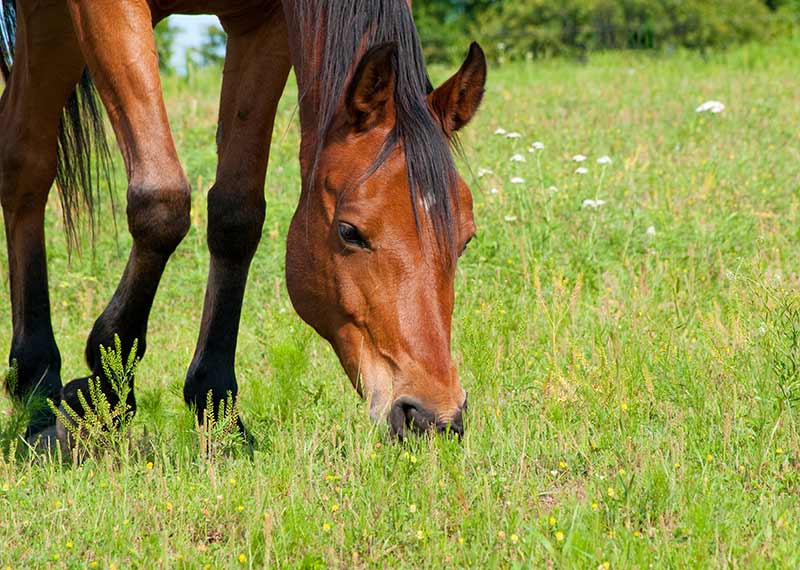
Horses have a one-dimensional stomach which allows them to mainly feed on fibrous vegetation or plant material. This means that fibrous plants such as grasses should make up the largest portion of their diets. Their unique digestive system allows them to utilise most of all the nutrients in the plant material as a nutritional energy source.
Fibre digestion
Generally speaking, fibre falls into two categories:
- Soluble fibre ??? this is mainly made up of the non-woody portions of plants which include saps, resin, pectin or gums.
- Insoluble fibre ??? this is the structural parts of the plant
Horses tend to utilise most of the ingested fibre, whether it be soluble or insoluble. Most of the fibre will ferment in the hindgut and provide energy for the horse, while the remainder of the fibre that is resistant to fermentation plays an important role in maintaining normal gastrointestinal motility and function.
For some horses, this digestive system fermentation of fibre can provide all the energy they need as it is slow releasing. ??Therefore it is important for horses to have a continued intake of small, high fibre meals that allow them to keep their energy high whilst preventing large swings in blood glucose concentration.
Fibre problems
Without the properly balanced diet to keep the horse???s digestive system maintained, they wouldn???t have enough bacteria to extract the nutritional benefits from the fibre sources. Changes in the balance of this bacterial population can cause serious risk for digestive upsets, colic, laminitis and other digestive related problems.
Ultimately, fibre is an essential nutrient as horses need it for proper development, function and overall health. Horses lacking in fibre intake are at risk of serious health risks and behavioural problems. Therefore balancing their diet, the quantity, quality and type of fibre should be of top priority when it comes to your horse???s health.
If you need any help with working out your horse???s diet, contact a vet or local feed supplier in order to gain a further understanding to their needs and requirements.


